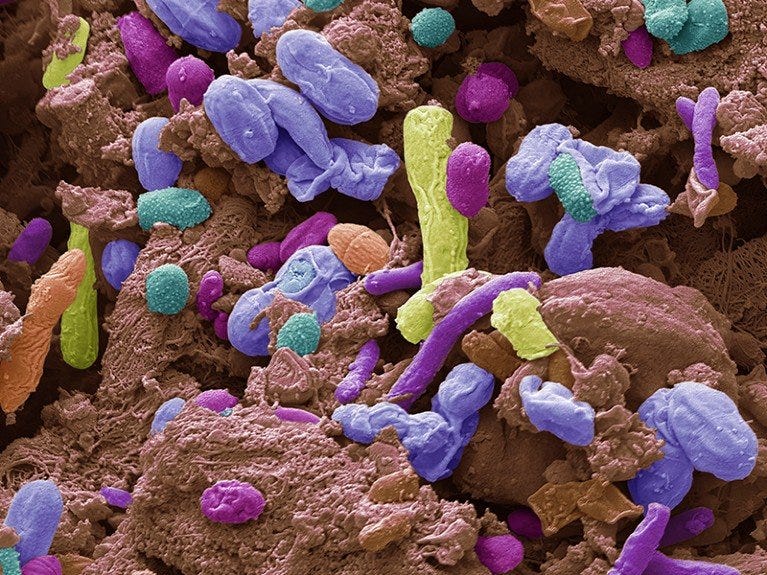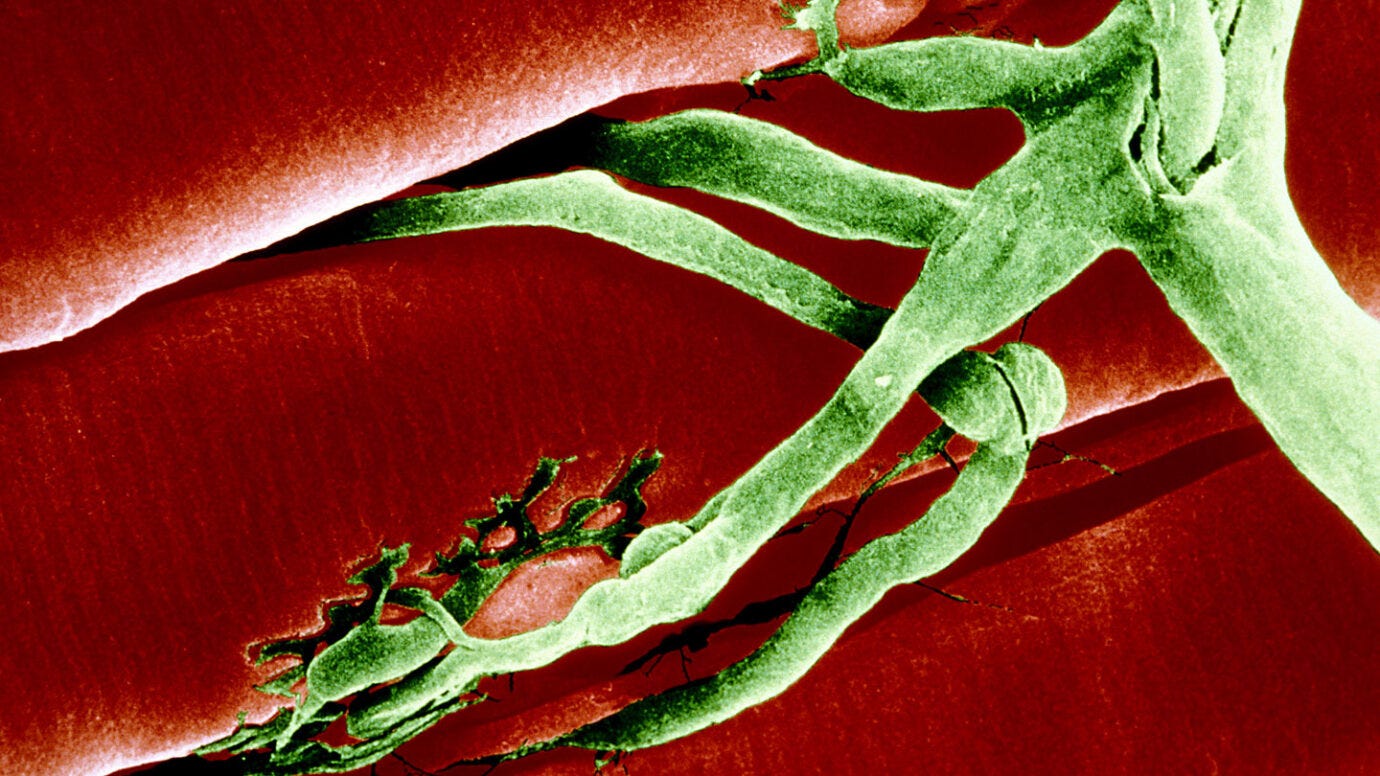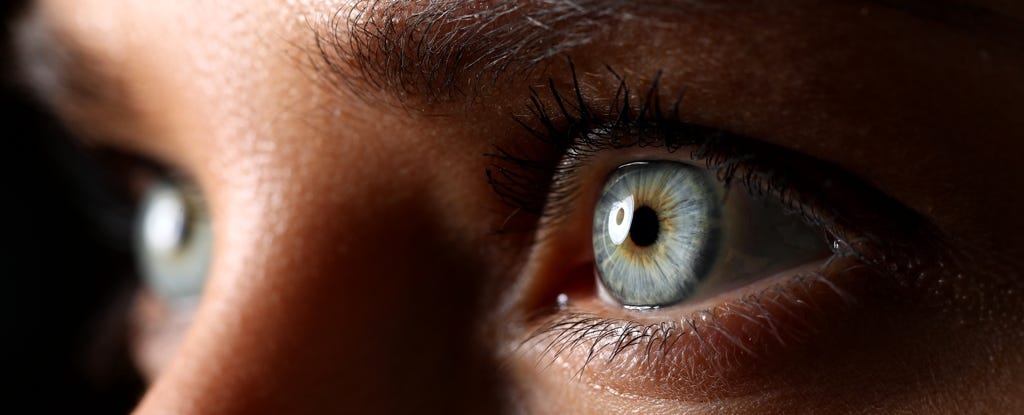Sci-Ed Update 301
Restoring strength to aging muscles, brain-body connections, free anatomy images, congenital syphilis crisis, chimeric embryos, social classroom, evaporation discovery, and more!
Brain and body are more intertwined than we knew

For decades, scientists thought of the brain as the body’s most valuable — and consequently most closely guarded — asset. Locked safely behind a biological barrier, away from the hurly-burly of the rest of the body, it was broadly free of the ravages of invading germs, the battles waged by the immune system and the constant churn of cells.
Then, 20-odd years ago, some researchers began to ask a heretical question: is the brain really so isolated? The answer, according to a growing body of evidence, is no — and has important implications for both science and health care.
The list of brain conditions that have been associated with changes elsewhere in the body is long and growing.
Read more→ AandP.info/v7v
Teaching resource: 10 free high-quality anatomy images for educators to download and use
It's true that pictures tell a thousand words - especially when you are teaching about structures that are hidden deep inside a body.
So, to celebrate World Anatomy Day 2023, we are very excited to offer our anatomy-loving friends ten free high-quality anatomy images that you can download and use for your anatomy teaching!
Kevin Patton comment→ This is a free offer from ADInstruments. You have to fill out their form to get the downloads.
Read more→ AandP.info/uf7
‘Crisis’: Congenital syphilis increasing at ‘heartbreaking rate’
Cases of congenital syphilis increased more than 10-fold over a decade.
Nearly nine in 10 cases last year could have been prevented.
Read more→ AandP.info/vtb
This hybrid baby monkey is made of cells from two embryos

Scientists have produced an infant ‘chimeric’ monkey by injecting a monkey embryo with stem cells from a genetically distinct donor embryo1. The resulting animal is the first live-born chimeric primate to have a high proportion of cells originating from donor stem cells.
The finding, reported today in Cell, opens the door to using chimeric monkeys, which are more biologically similar to humans than are chimeric rats and mice, for studying human diseases and developing treatments, says stem-cell biologist Miguel Esteban at the University of Chinese Academy of Sciences in Guangzhou, a co-author of the study.
Kevin Patton comment→ My, oh my!
Read more→ AandP.info/5so
The One Teaching Strategy That Will Fix Your Anatomy & Physiology Course
In episode 143 of The A&P Professor podcast for anatomy and physiology faculty, host Kevin Patton uncovers the super-secret, single, ultimate teaching strategy you need to keep your course tuned up and effective. He jumps onto a soapbox for a rant about the evils of uniformity among courses and course sections.
Kevin also revisits the “out there” transducer model of the brain and suggests a connection with a recent discovery supporting quantum wave activity in brain cell microtubules. Yes, quantum waves in the microtubules. Kevin also clarifies and expands on those wacky “extra” courses he described in Episodes 140 and 141.
00:00 | Introduction
00:51 | Clarifying Kevin’s Wacky Supplemental Courses
15:50 | Quantum Activity in Brain Microtubules?
28:15 | Could There Be More Than One Strategy?
34:29 | The TAPP Hotline
35:11 | There Really Is Only One Strategy
48:00 | Staying Connected
To listen to this episode, click on the play button above ⏵ (if present) or this link→ theAPprofessor.org/podcast-episode-143.html
The Social Classroom
Connections can be key to students’ academic success. Professors can help.
The weirdness of the pandemic emphasized for many that we are social creatures; during its most isolating stretch, the virtual classroom, hastily built as it was, remained a place where students and professors could attend to that aspect of their humanity. All the same, the pandemic warped the social experience of the teenagers who are now traditional-age college students. While many are eager to connect with their peers, they might not quite know how to go about it.
Helping them find their way is one more task on what may feel like an endless list for busy instructors. But connecting students with their classmates isn’t just something that sounds nice or feels good. A growing body of evidence from neuroscience and related fields has shown that learning is enhanced — the human brain actually works differently — in the company of other people.
Read more→ AandP.info/s62
Surprise Discovery Reveals a Whole New Source of Evaporation
The evaporation of liquid water into steam or mist is one of the most well-studied physical processes on Earth.
In an unexpected twist, researchers at the Massachusetts Institute of Technology (MIT) think they have discovered a whole new source of evaporation, and its transformative effect on liquid water could eclipse even that of heat.
Light itself.
The team expects skepticism and pushback, which is why they are already working with other experts to confirm their results and hypotheses.
If they turn out to be right, their discovery will fundamentally change how climate scientists understand the water cycle.
Kevin Patton comment→ If this discovery is confirmed, I’m curious about how this might affect the evaporation of sweat from human skin.
Read more→ AandP.info/xbq
Something in Your Brain Can Tell When a Face Isn't Real
In another recent study, researchers in Australia delved deeper into our ability to tell the difference between real and synthetic faces. In their first experiment, online participants failed to distinguish between the two types of faces, and again perceived the synthetic faces as more real than the real ones.
However, their second experiment seemed to tell a different story. A new sample of participants, this time in the lab, were asked to wear electroencephalography (EEG) caps on their heads. The electrodes fitted to these caps then measured the electrical activity in the participants' brains.
During the task, different faces were presented in a rapid sequence, and while this was happening, participants were asked to press a button whenever a white circle (shown on top of the faces) turned red. This ensured participants were focused on the centre of the screen where the images were being shown.
The results from the EEG test showed that brain activity differed when people were looking at real versus synthetic faces. This difference was apparent at around 170 milliseconds after the faces first appeared onscreen.
Read more→ AandP.info/yaj
Blocking an aging-related enzyme may restore muscle strength

As people age, their muscles tend to dwindle and weaken, especially with lack of use. With continued muscle loss, daily tasks are harder to perform and the risk of falling increases. One research team is teasing apart what’s behind this muscle loss by focusing on an enzyme associated with aging, which they’ve named a “gerozyme.”
The enzyme is 15-hydroxyprostaglandin dehydrogenase, or 15-PGDH. It breaks down a signaling compound called prostaglandin E2. That compound activates the proliferation of muscle stem cells, regenerating damaged muscles.
Stem cell biologist Helen Blau of Stanford University School of Medicine and colleagues previously found that blocking 15-PGDH in old mice restored their withered muscles and improved their strength after a month of treatment. On the flip side, young mice lost muscle and became weaker after their levels of this enzyme were increased for a month.
Read more→ AandP.info/k4z








